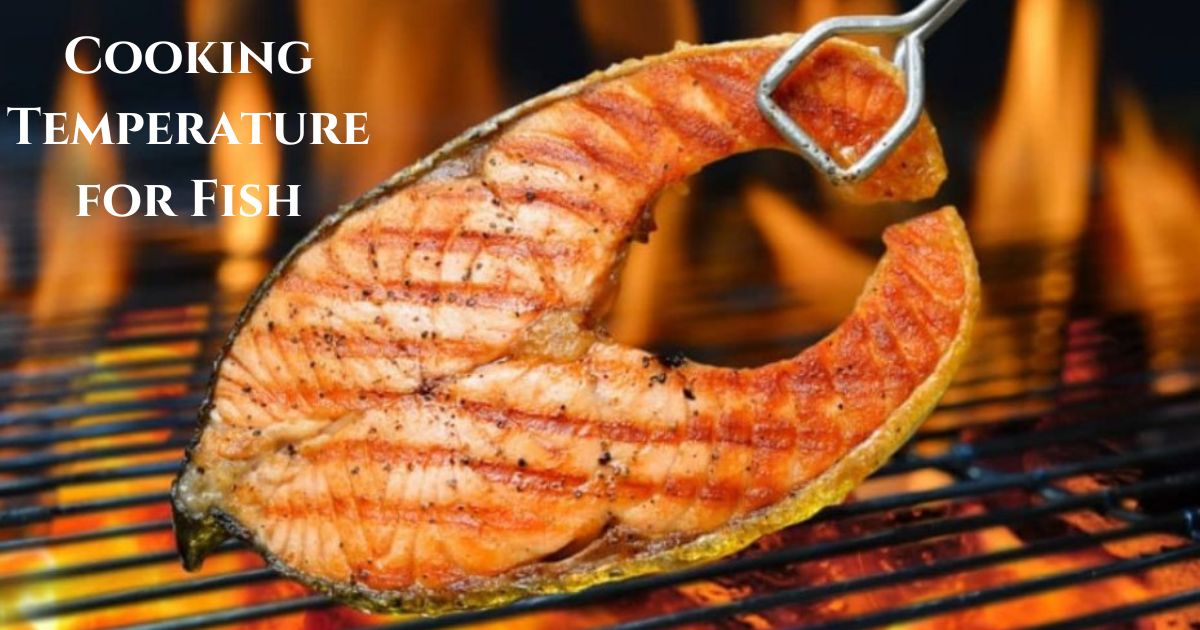The Ideal Cooking Temperature for Fish: A Comprehensive Guide
Introduction
Cooking fish to perfection requires precise attention to temperature. Not only does the right cooking temperature ensure safety, but it also enhances the flavors and textures of this delicate protein. In this article, we will delve into the significance of cooking fish at the appropriate temperature and provide practical guidelines for determining the ideal cooking temperature for various types of fish.
Understanding the Importance of Cooking Temperature
Cooking fish at the correct temperature is vital for two primary reasons
- Food Safety: Fish, like other seafood, can harbor harmful bacteria and parasites that pose health risks. By cooking fish to the recommended temperature, these pathogens are effectively eliminated, ensuring that your meal is safe to consume.
- Texture and Flavor: Overcooking fish results in dry, tough, and unappetizing flesh. By cooking at the right temperature, you can maintain the delicate texture and moisture content of the fish, resulting in a delicious dining experience.
What Temperature Should Fish Be Cooked to?
The key to perfectly cooked fish lies not in guesswork, but in understanding its internal temperature. Drawing from my mother’s extensive culinary experience, she emphasizes that achieving the ideal cooking temperature is crucial for a delightful fish dish. Fish cooked at too low a temperature remains chewy and resistant to flaking, resembling its raw state. Cutting through it becomes a challenging task, and the overall texture is compromised. On the other hand, overcooked fish become dry and lose its delicate texture, resulting in a disappointing dining experience.
My mother’s wisdom further highlights the importance of finding the balance between food safety and culinary enjoyment. While high temperatures can minimize the risk of foodborne illness, they can also sacrifice the flavors and moisture of the fish. The ideal temperature for achieving flakiness and moisture varies depending on the specific type of fish, considering its unique properties and composition.
In her kitchen, an instant-read thermometer has become an indispensable tool for ensuring the perfect balance of doneness. By simply inserting the probe into the thickest part of the fillet, she can obtain an accurate reading of the fish’s internal temperature. This allows her to gauge the cooking progress and make necessary adjustments to achieve the desired outcome—succulent, tender fish with a flaky texture and optimal flavors.
Cooking Temperatures for Different Fish
- Wild Salmon:For the most tender and flaky texture, aim for a maximum internal temperature of 120°F (49°C). This will result in a medium-rare doneness with a slightly translucent center.
- White Fish (cod, halibut):Target an internal temperature of 130°F (54°C) for a medium doneness. This will produce perfectly flaky white fish with a moist texture.
- Very Fatty Fish (sablefish):Due to the higher fat content, you have more flexibility with the cooking temperature. Aim for medium doneness (130°F) but don’t hesitate to go up to 135°F (57°C) for crispier skin or a deeper char.
These temperatures are a great starting point but feel free to adjust based on your preference. Like your fish cooked through? Aim slightly higher. Prefer it more tender? Cook for a shorter time to achieve a lower internal temperature.
| Fish Type | Ideal Temperature (Doneness) |
| Wild Salmon | 120°F (49°C) – Medium-rare |
| White Fish (cod, halibut) | 130°F (54°C) – Medium |
| Very Fatty Fish (sablefish) | 130°F (54°C) – 135°F (57°C) – Medium |
Additional Cooking Methods
Different cooking methods may require slight variations in temperature
- Baking or Roasting: Preheat the oven to a temperature between 350°F (177°C) and 400°F (204°C). Cook the fish until it reaches the recommended internal temperature.
- Grilling: Preheat the grill to medium-high heat (around 400°F (204°C)). Use direct or indirect heat as per the recipe. Grill the fish until it reaches the recommended internal temperature.
- Pan-Frying: Heat the pan to medium-high heat (around 375°F (190°C)). Cook the fish until it turns golden brown and reaches the desired internal temperature.
| Cooking Method | Recommended Temperature Range |
| Baking or Roasting | 350°F (177°C) – 400°F (204°C) |
| Grilling | Medium-high heat (around 400°F (204°C)) |
| Pan-Frying | Medium-high heat (around 375°F (190°C)) |
Visual Cues for Doneness
Alongside using a food thermometer, visual cues also aid in determining the doneness of fish
- Texture: The fish should be opaque and easily flake with a fork. It should appear moist and tender.
- Color: Cooked fish typically transition from translucent to opaque. However, certain fish varieties, like salmon, may retain a slight pink or coral hue even when fully cooked.
Conclusion
Cooking fish to the appropriate temperature is crucial for both safety and taste. By following the recommended internal temperature guidelines and utilizing visual cues, you can achieve perfectly cooked fish that is both delectable and safe to enjoy. Remember, investing in a reliable food thermometer is a valuable tool in ensuring culinary success in your fish preparations. So, the next time you embark on a seafood culinary adventure, let the ideal cooking temperature be your guide to achieving culinary excellence.
FAQ’s
Q: What’s the safest temperature to cook fish to?
A: The USDA recommends cooking all fish to an internal temperature of 145°F (63°C) to ensure the destruction of any harmful bacteria.
Q: Can I cook fish to a lower temperature?
A: For certain fish varieties like tuna or salmon, some prefer a slightly rarer texture achieved at around 125°F (52°C). However, this is only recommended for very fresh, high-quality fish to minimize the risk of foodborne illness.
Q: How can I tell if my fish is cooked without a thermometer?
A: Look for visual cues like opaque white flesh throughout and the ability to easily flake the fish with a fork.
Q: My fish seems to keep cooking after I take it off the heat. Why?
A: Fish continues to cook slightly even after removal from the heat source. Take this into account and remove the fish a bit before it reaches your desired final temperature.
